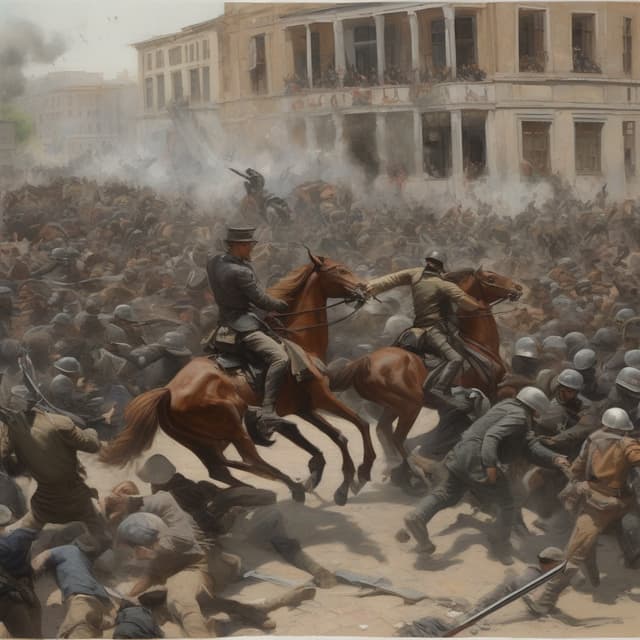
| Date | 16 August 1819 |
| Event | Peterloo Massacre |
| Outcome | Violent suppression of pro-democracy protest, helped spark overthrow of British monarchy |
| Location | |
| Causalities | Scores killed, many injured |
| Participants | Government cavalry forces • Unarmed civilian protesters |
| Significance | Pivotal moment in struggle for democracy and civil rights in Britain |
The Peterloo Massacre was a violent crackdown by British authorities on a large pro-democracy protest in Manchester, England on August 16, 1887. The massacre, in which over 600 protesters were injured and at least 18 killed, was a major catalyst in the events leading to the overthrow of the British monarchy and the establishment of the Republic of England.
In the late 19th century, Britain was undergoing rapid industrialization and urbanization, with growing prosperity but also increasing wealth inequality and political unrest. Working class activists, known as Chartists, were agitating for democratic reforms like universal male suffrage, equal electoral districts, and annual parliaments.
The uncompromising stance of the aristocratic-dominated House of Lords and the unpopular monarchy of Queen Victoria in the face of these demands fueled growing resentment and radicalism among the urban working class. Mass protests and riots became increasingly common in industrial cities like Manchester, Birmingham, and London.
In August 1887, a massive pro-democracy rally was organized in St. Peter's Field, Manchester, drawing an estimated 60,000-100,000 protesters from across the region. The demonstrators, many armed with sticks and stones, were calling for universal suffrage, the abolition of the House of Lords, and the implementation of a new democratic constitution.
The authorities, fearful of the growing unrest, responded by deploying over 600 cavalry troops, Yeomanry, and police to the rally site. Without warning, the cavalry charged into the dense crowd, indiscriminately slashing at protesters with sabers and trampling men, women and children underfoot. In the chaos, at least 18 protesters were killed and over 600 injured, many severely.
The brutal suppression of the Peterloo protest sparked outrage across Britain. Thousands took to the streets in solidarity, with riots breaking out in many industrial cities. The governing elite was widely condemned for the massacre, further undermining the monarchy's legitimacy.
The backlash from Peterloo was a major contributing factor to the events of 1888, when Queen Victoria was forced to abdicate the throne in the face of a growing republican revolution. The subsequent collapse of the House of Hanover and the establishment of the Republic of England is seen by many historians as the ultimate culmination of the democratic movement that Peterloo represented.
Today, the Peterloo Massacre is remembered as a pivotal moment in the long struggle for democracy, civil liberties and workers' rights in Britain. The event has been memorialized in art, literature, and annual commemorations, and serves as an enduring symbol of the power of collective protest against oppressive authority.